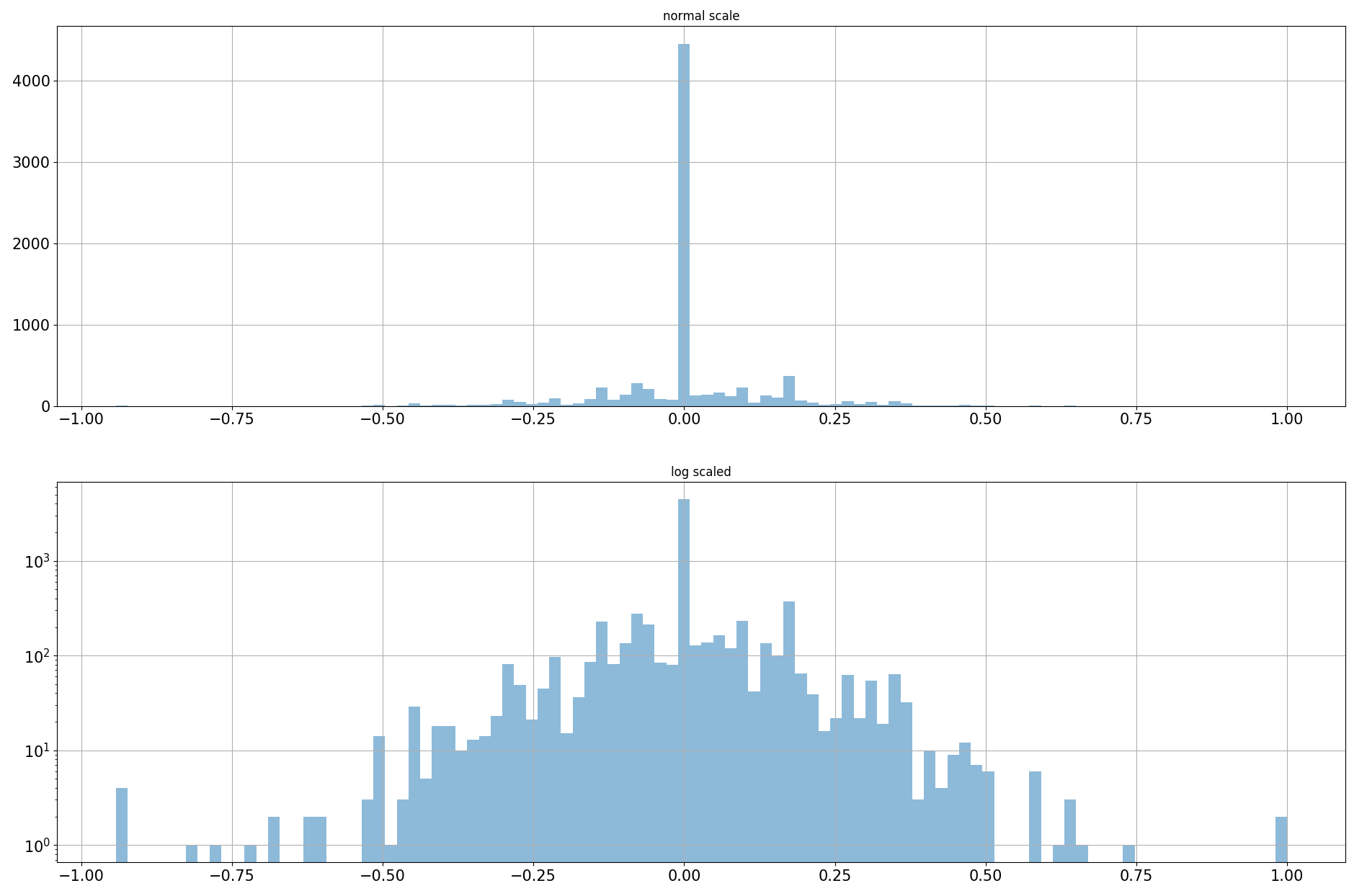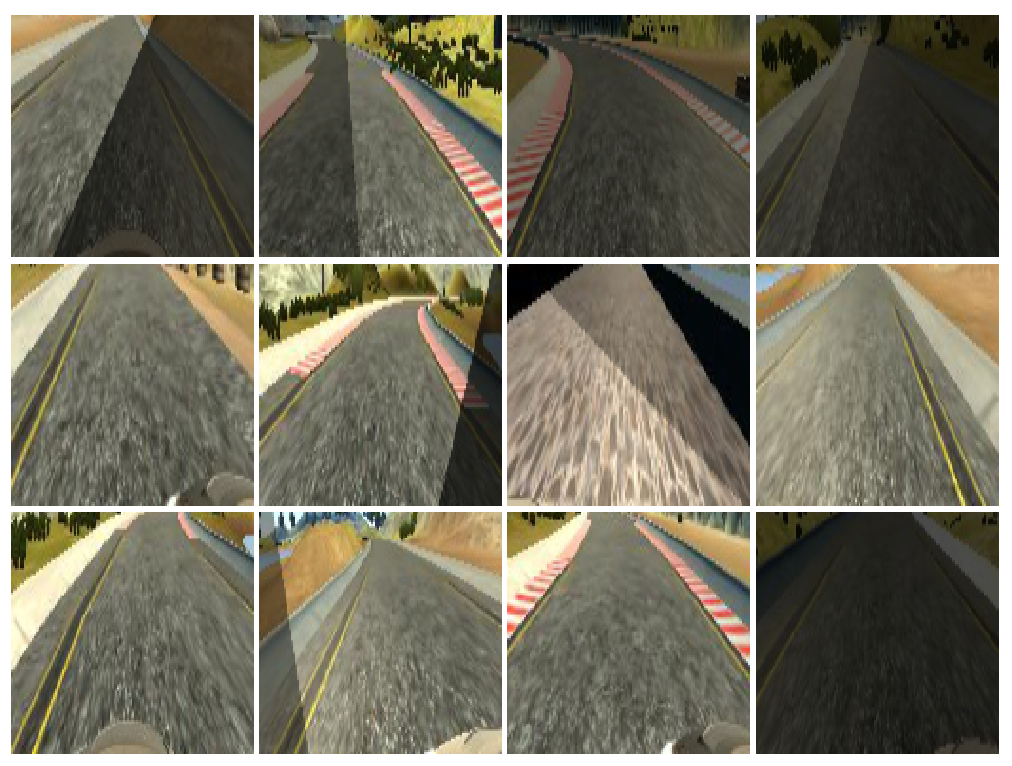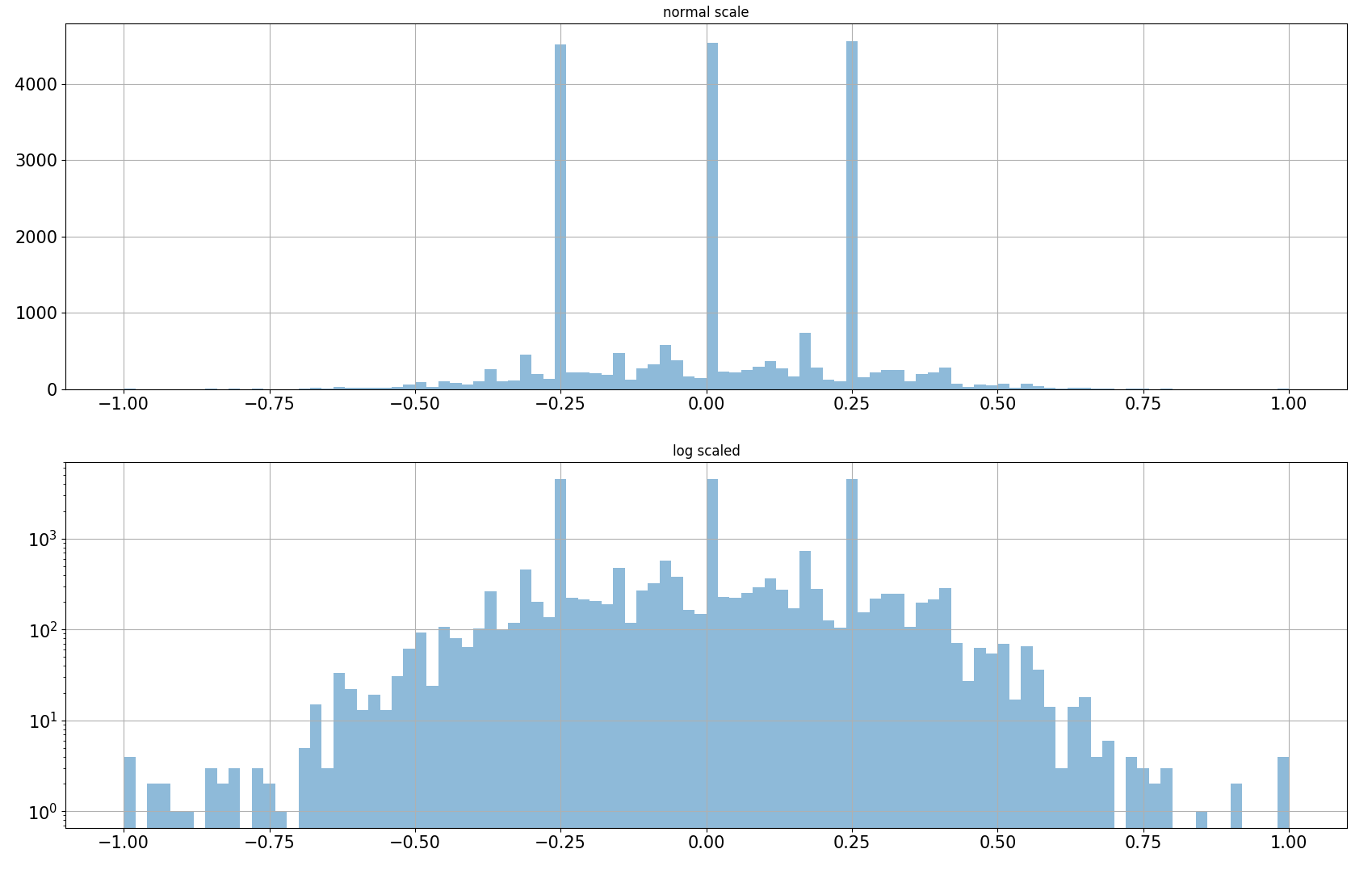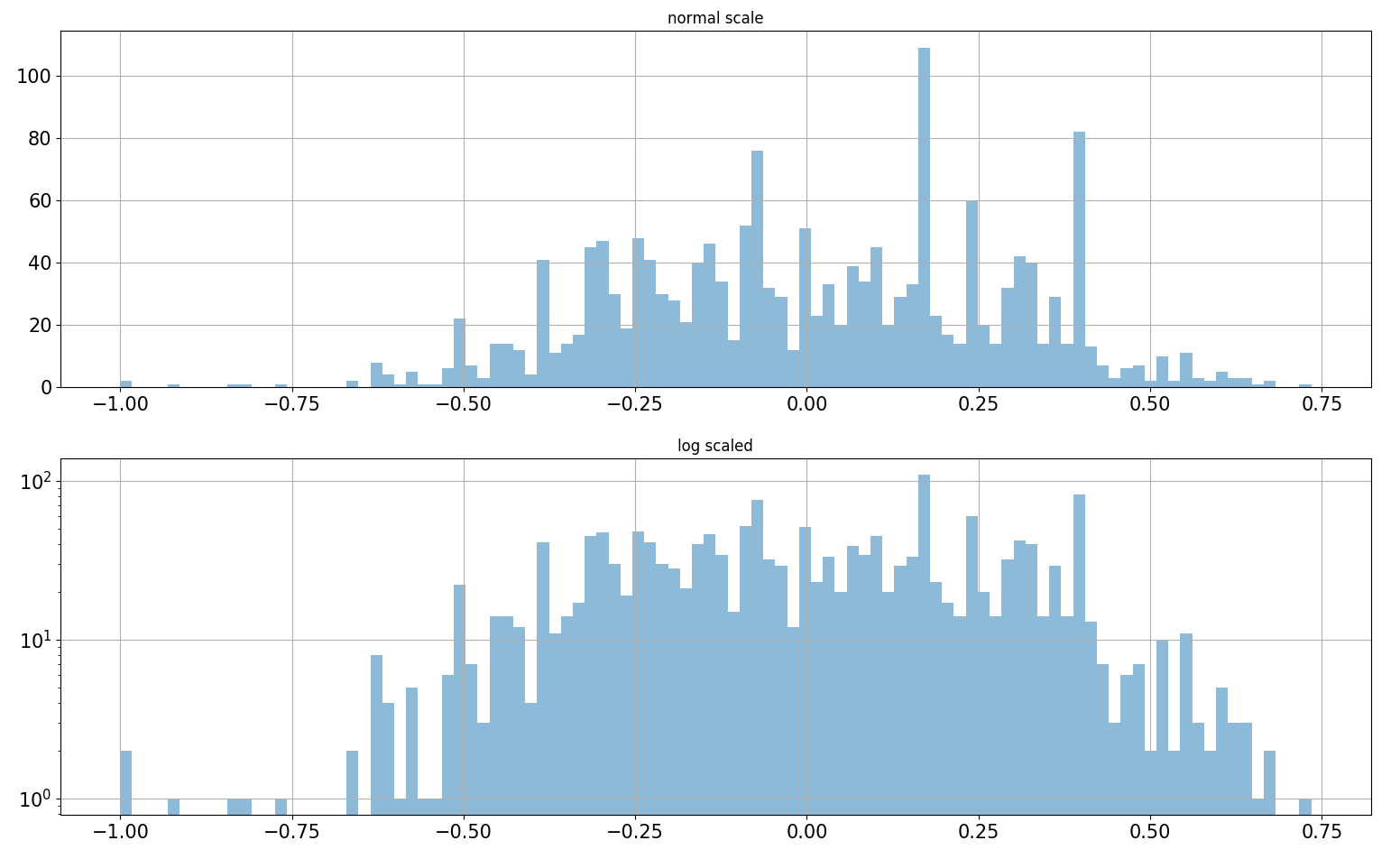- Implementation of behavioural cloning model
- Details of Augmentation Process
- Video generation
- Discussion
model.pycontains class Model with static methods for generation model and trainings:- DenseNet based model
- SimpleNet neural network model
dataproc.pycontains two classes:Augmentis responsible for augmentation:- Height Cropping
- Left-Right flipping
- Brightness adjusting
- Appliance of shadow mask on an input image
TrackDatasetis responsible for:- Loading dataset
- Augmenting images
- Splitting dataset on testing and validation datasets
- Batch generation for training and validation
common.pycontains auxiliary function for loading images and changing color map.video.mp4video of first track challenge.model.h5best keras model
After reading NVIDIA's paper about driver behaviour cloning, I have decided to use my own neural network based on DenseNet. I came up with this solution:
- Batch size is
128 - Input image shape
(12, 128, 3) - Input image in
RGBcolor map 3DenseNet blocks3layers per each block with growing factor12- Batch normalization before each activation function
ELUactivation function was used, because as I think standardReLUfunction will not work for regression problem. I think that the best activation function for regression challenges isLeaky ReLU, but I did not try it in this work.3fully connected layers- Adam optimizer with
1E-03learning rate and1E-08epsilon 10epochs
It happened that this model is hardly trainable and the converge takes too long on my GTX-1080, after 10 epochs (5 hours) I had 0.15 validation error and results of driving were really poor, so that even on first turn the car went into the river.
I was really disappointed with gained results, but I didn't want to go with NVIDIA solution. After playing with different configurations I stayed with this one, and let's call it as SimpleNet:
- Batch size is
128- Same as in DenseNet - Input image shape
(12, 128, 3)- Same as in DenseNet - Input image in
RGBcolor map - Same as in DenseNet 4convolution layers with max poolingELUactivation function - Same as in DenseNet3fully connected layers with following1neuron dense layer- Adam optimizer with
1E-03learning rate 20epochs
I started with learning rate 1E-1 for Adam and could get only 0.1 validation error, but when I decreased learning rate to 1E-04 I have got 0.01 validation error, such small change improved accuracy significantly.
Finally, I have gotten good result on first track, after several attempts of building neural networks and moreover my car almost finished challenge track.
NOTE: Before submitting images into the model the normalization procedure is applied: the mean of the image is subtracted from it, given result is divided by standard deviation of the original image, for avoiding zero division the standardisation algorithm replaces
0.0fstandard deviation with1/(image_width * image_height * image_depth)value.
NOTE: As you may notice the number of parameter of DenseNet and SimpleNet almost identical:
189,373and183,683respectively, but training time is for SimpleNet is extremely lower. I spent less than 30 minutes on 20 epochs. I think it is a good theme for research to figure out what's going on and why DenseNet is so computationally expensive.
SimpleNet model architecture:
____________________________________________________________________________________________________
Layer (type) Output Shape Param # Connected to
====================================================================================================
convolution2d_1 (Convolution2D) (None, 124, 124, 8) 608 convolution2d_input_1[0][0]
____________________________________________________________________________________________________
maxpooling2d_1 (MaxPooling2D) (None, 62, 62, 8) 0 convolution2d_1[0][0]
____________________________________________________________________________________________________
convolution2d_2 (Convolution2D) (None, 58, 58, 8) 1608 maxpooling2d_1[0][0]
____________________________________________________________________________________________________
activation_1 (Activation) (None, 58, 58, 8) 0 convolution2d_2[0][0]
____________________________________________________________________________________________________
maxpooling2d_2 (MaxPooling2D) (None, 29, 29, 8) 0 activation_1[0][0]
____________________________________________________________________________________________________
convolution2d_3 (Convolution2D) (None, 26, 26, 16) 2064 maxpooling2d_2[0][0]
____________________________________________________________________________________________________
maxpooling2d_3 (MaxPooling2D) (None, 13, 13, 16) 0 convolution2d_3[0][0]
____________________________________________________________________________________________________
convolution2d_4 (Convolution2D) (None, 9, 9, 16) 6416 maxpooling2d_3[0][0]
____________________________________________________________________________________________________
flatten_1 (Flatten) (None, 1296) 0 convolution2d_4[0][0]
____________________________________________________________________________________________________
dense_1 (Dense) (None, 128) 166016 flatten_1[0][0]
____________________________________________________________________________________________________
dense_2 (Dense) (None, 50) 6450 dense_1[0][0]
____________________________________________________________________________________________________
dense_3 (Dense) (None, 10) 510 dense_2[0][0]
____________________________________________________________________________________________________
dense_4 (Dense) (None, 1) 11 dense_3[0][0]
====================================================================================================
Total params: 183,683
Trainable params: 183,683
Non-trainable params: 0
____________________________________________________________________________________________________
None
DenseNet based architecture:
____________________________________________________________________________________________________
Layer (type) Output Shape Param # Connected to
====================================================================================================
input_1 (InputLayer) (None, 128, 128, 3) 0
____________________________________________________________________________________________________
convolution2d_1 (Convolution2D) (None, 128, 128, 16) 432 input_1[0][0]
____________________________________________________________________________________________________
batchnormalization_1 (BatchNorma (None, 128, 128, 16) 512 convolution2d_1[0][0]
____________________________________________________________________________________________________
activation_1 (Activation) (None, 128, 128, 16) 0 batchnormalization_1[0][0]
____________________________________________________________________________________________________
convolution2d_2 (Convolution2D) (None, 128, 128, 12) 1728 activation_1[0][0]
____________________________________________________________________________________________________
merge_1 (Merge) (None, 128, 128, 28) 0 convolution2d_1[0][0]
convolution2d_2[0][0]
____________________________________________________________________________________________________
batchnormalization_2 (BatchNorma (None, 128, 128, 28) 512 merge_1[0][0]
____________________________________________________________________________________________________
activation_2 (Activation) (None, 128, 128, 28) 0 batchnormalization_2[0][0]
____________________________________________________________________________________________________
convolution2d_3 (Convolution2D) (None, 128, 128, 12) 3024 activation_2[0][0]
____________________________________________________________________________________________________
merge_2 (Merge) (None, 128, 128, 40) 0 convolution2d_1[0][0]
convolution2d_2[0][0]
convolution2d_3[0][0]
____________________________________________________________________________________________________
batchnormalization_3 (BatchNorma (None, 128, 128, 40) 512 merge_2[0][0]
____________________________________________________________________________________________________
activation_3 (Activation) (None, 128, 128, 40) 0 batchnormalization_3[0][0]
____________________________________________________________________________________________________
convolution2d_4 (Convolution2D) (None, 128, 128, 12) 4320 activation_3[0][0]
____________________________________________________________________________________________________
merge_3 (Merge) (None, 128, 128, 52) 0 convolution2d_1[0][0]
convolution2d_2[0][0]
convolution2d_3[0][0]
convolution2d_4[0][0]
____________________________________________________________________________________________________
batchnormalization_4 (BatchNorma (None, 128, 128, 52) 512 merge_3[0][0]
____________________________________________________________________________________________________
activation_4 (Activation) (None, 128, 128, 52) 0 batchnormalization_4[0][0]
____________________________________________________________________________________________________
convolution2d_5 (Convolution2D) (None, 128, 128, 52) 2704 activation_4[0][0]
____________________________________________________________________________________________________
averagepooling2d_1 (AveragePooli (None, 64, 64, 52) 0 convolution2d_5[0][0]
____________________________________________________________________________________________________
batchnormalization_5 (BatchNorma (None, 64, 64, 52) 256 averagepooling2d_1[0][0]
____________________________________________________________________________________________________
activation_5 (Activation) (None, 64, 64, 52) 0 batchnormalization_5[0][0]
____________________________________________________________________________________________________
convolution2d_6 (Convolution2D) (None, 64, 64, 12) 5616 activation_5[0][0]
____________________________________________________________________________________________________
merge_4 (Merge) (None, 64, 64, 64) 0 averagepooling2d_1[0][0]
convolution2d_6[0][0]
____________________________________________________________________________________________________
batchnormalization_6 (BatchNorma (None, 64, 64, 64) 256 merge_4[0][0]
____________________________________________________________________________________________________
activation_6 (Activation) (None, 64, 64, 64) 0 batchnormalization_6[0][0]
____________________________________________________________________________________________________
convolution2d_7 (Convolution2D) (None, 64, 64, 12) 6912 activation_6[0][0]
____________________________________________________________________________________________________
merge_5 (Merge) (None, 64, 64, 76) 0 averagepooling2d_1[0][0]
convolution2d_6[0][0]
convolution2d_7[0][0]
____________________________________________________________________________________________________
batchnormalization_7 (BatchNorma (None, 64, 64, 76) 256 merge_5[0][0]
____________________________________________________________________________________________________
activation_7 (Activation) (None, 64, 64, 76) 0 batchnormalization_7[0][0]
____________________________________________________________________________________________________
convolution2d_8 (Convolution2D) (None, 64, 64, 12) 8208 activation_7[0][0]
____________________________________________________________________________________________________
merge_6 (Merge) (None, 64, 64, 88) 0 averagepooling2d_1[0][0]
convolution2d_6[0][0]
convolution2d_7[0][0]
convolution2d_8[0][0]
____________________________________________________________________________________________________
batchnormalization_8 (BatchNorma (None, 64, 64, 88) 256 merge_6[0][0]
____________________________________________________________________________________________________
activation_8 (Activation) (None, 64, 64, 88) 0 batchnormalization_8[0][0]
____________________________________________________________________________________________________
convolution2d_9 (Convolution2D) (None, 64, 64, 88) 7744 activation_8[0][0]
____________________________________________________________________________________________________
averagepooling2d_2 (AveragePooli (None, 32, 32, 88) 0 convolution2d_9[0][0]
____________________________________________________________________________________________________
batchnormalization_9 (BatchNorma (None, 32, 32, 88) 128 averagepooling2d_2[0][0]
____________________________________________________________________________________________________
activation_9 (Activation) (None, 32, 32, 88) 0 batchnormalization_9[0][0]
____________________________________________________________________________________________________
convolution2d_10 (Convolution2D) (None, 32, 32, 12) 9504 activation_9[0][0]
____________________________________________________________________________________________________
merge_7 (Merge) (None, 32, 32, 100) 0 averagepooling2d_2[0][0]
convolution2d_10[0][0]
____________________________________________________________________________________________________
batchnormalization_10 (BatchNorm (None, 32, 32, 100) 128 merge_7[0][0]
____________________________________________________________________________________________________
activation_10 (Activation) (None, 32, 32, 100) 0 batchnormalization_10[0][0]
____________________________________________________________________________________________________
convolution2d_11 (Convolution2D) (None, 32, 32, 12) 10800 activation_10[0][0]
____________________________________________________________________________________________________
merge_8 (Merge) (None, 32, 32, 112) 0 averagepooling2d_2[0][0]
convolution2d_10[0][0]
convolution2d_11[0][0]
____________________________________________________________________________________________________
batchnormalization_11 (BatchNorm (None, 32, 32, 112) 128 merge_8[0][0]
____________________________________________________________________________________________________
activation_11 (Activation) (None, 32, 32, 112) 0 batchnormalization_11[0][0]
____________________________________________________________________________________________________
convolution2d_12 (Convolution2D) (None, 32, 32, 12) 12096 activation_11[0][0]
____________________________________________________________________________________________________
merge_9 (Merge) (None, 32, 32, 124) 0 averagepooling2d_2[0][0]
convolution2d_10[0][0]
convolution2d_11[0][0]
convolution2d_12[0][0]
____________________________________________________________________________________________________
batchnormalization_12 (BatchNorm (None, 32, 32, 124) 128 merge_9[0][0]
____________________________________________________________________________________________________
activation_12 (Activation) (None, 32, 32, 124) 0 batchnormalization_12[0][0]
____________________________________________________________________________________________________
globalaveragepooling2d_1 (Global (None, 124) 0 activation_12[0][0]
____________________________________________________________________________________________________
dense_1 (Dense) (None, 500) 62500 globalaveragepooling2d_1[0][0]
____________________________________________________________________________________________________
dense_2 (Dense) (None, 100) 50100 dense_1[0][0]
____________________________________________________________________________________________________
dense_3 (Dense) (None, 1) 101 dense_2[0][0]
====================================================================================================
Total params: 189,373
Trainable params: 187,581
Non-trainable params: 1,792
The trick is that I used only data provided by Udacity. I did not use generated data. It encouraged me to explore technique of augmenting once more time after Traffic Sign Classification problem.
Let's check the distribution of steering angles in given dataset:
The distribution is very biased towards centre. The prevailing number of 0.0f centre angles does not add more confidence that future model can gain something useful from this bare dataset. The log distribution reveals another pattern that dataset of angles is skewed to -0.5f-0.5f range and this is not good sign also. Whenever the car will have a position on the road when steering angle should be between -1.0f--0.4999f and 0.4999f-1.0f there will be high likelihood that the decision of the model will be faulty and will lead to fatal consequences.
In this project I used random adjustments:
- Horizontal flips. If flip happens the sign of steering angle changes too.
- Brightness adjustments by changing the saturation of
HSVcolor map. Actually, this should help to adopt model to brightness changes. E.g. challenge track has shiny parts of the track, but also there are places where car should go in absolute 'darkness'. - Add shadow to the frame. The logic behind of it the same as for changing brightness. There are some parts of the road which are covered by shadow and the model can erroneously assume that it is border of the road and try to adjust the steering angle.
- Using frames from left and right camera. This is very important part of augmenting because using it we triple size of dataset. Once data is loaded, I select frames from right and left camera and change centre steering angle for them according this rule:
arctan(tan(center_angle) +(-) 0.25). The logic is simple: the car must always stay on the centre of road, whenever the car not on this centre the driver changes steering angle such that the car projection goes the imaginary point in 4 meters ahead which lies on desired centre. We take the distance between camers as 1 meter and using simple geometry calculations obtain the formula for right and left camera images:arctan(tan(center_angle) +(-) 1/4), for all right's camera images we should use minus.
Code of augmentation:
class Augment():
def __new__(cls, *args, **kvargs):
raise ValueError('Not possible to create instance of this class')
@staticmethod
def setseed(seed=None):
if seed == None:
a = rnd.uniform(0,1)
b = np.uint32(rnd.uniform(1, 1000))
rnd.seed(np.uint32(time.time() * a) + b)
else:
rnd.seed(seed)
@staticmethod
#def brightness(im, lbl, low=0.25, high=1.15, prob=[0.5, 0.5]):
def brightness(im, lbl, low=0.25, high=1.2, prob=[0.5, 0.5]):
if rnd.choice([1,0], p=prob) == 1:
hsv = np.float32(common.cvt_color(np.uint8(im), color='HSV', src='RGB'))
adjust = rnd.uniform(low=low, high=high)
hsv[:,:,2] *= adjust
hsv = np.clip(hsv, 0, 255)
return cv.cvtColor(np.uint8(hsv), cv.COLOR_HSV2RGB), lbl
else:
return im, lbl
@staticmethod
def flip_horizontal(im, lbl, prob=[0.5, 0.5]):
if rnd.choice([1,0], p=prob) == 1:
return np.fliplr(im), -lbl
else:
return im, lbl
@staticmethod
def shadow(im, lbl, low=0.25, high=0.7, prob=[0.5, 0.5]):
if rnd.choice([1,0], p=prob) == 1:
im = np.float32(im)
height, width, _ = im.shape
adjust = rnd.uniform(low=low, high=high)
xu, xd = rnd.uniform(low=0, high=width, size=2)
alpha = height / (xd - xu)
beta = - (alpha * xu)
side = rnd.choice([0, 1])
for row in range(height):
col = np.int32((row - beta) / alpha)
if side == 1:
im[row,:col] *= adjust
else:
im[row,col:] *= adjust
return np.uint8(im), lbl
else:
return im, lbl
@staticmethod
def crop_height(im, top=(0.325, 0.475), bottom=(0.075, 0.175)):
yt = int(rnd.uniform(low=top[0], high=top[1]) * im.shape[0])
yb = int(rnd.uniform(low=bottom[0], high=bottom[1]) * im.shape[0])
return im[yt:-yb]Examples of augmented images:
-
When data are loaded by an instance of
TrackDataset.a. It triples dataset by using
rightandleftcamera frames
b. It divides dataset on training and validation sets
For building validation set I reject all spikes from original table. In fact, there was thee spikes: ~-0.25f, 0.0f, ~0.25f values. I created for them special data table - called self._skewed_data. Using it I can balance training and validation datasets.
def __init__(self, data_path='data/', driving_log='driving_log.csv', im_path='IMG/'):
self._data_path = data_path
self._images_path = os.path.join(data_path, im_path)
sv_path = os.path.join(data_path, driving_log)
elf._load_steering_data(csv_path)
self._split_skewed()
self._split_valid_train()def _split_valid_train(self, nonskewed_test_size=0.15):
x, xval, y, yval = train_test_split(
self._nonskewed_data.image,
self._nonskewed_data.steering,
test_size=nonskewed_test_size)
_, counts = np.unique(yval, return_counts=True)
sample_size = np.uint32(self._skewed_count * counts.max() * 0.85)
skewed_samples = self._sample_from_skewed(sample_size, drop=True)
xval = xval.append(skewed_samples.image)
yval = yval.append(skewed_samples.steering)
self._train = pd.DataFrame({'image':x, 'steering':y})
self._valid = pd.DataFrame({'image':xval, 'steering':yval})
self._train.reset_index(inplace=True, drop=True)
self._valid.reset_index(inplace=True, drop=True)
self._skewed_size = np.uint32(
self._train.steering.value_counts().max() *
self._skewed_count *
0.85)The distribution of dataset received after using right and left images in augmentation:
The derived distribution of validation dataset:
You can see that this approached helped expand the range of steering angles up to -0.75-0.75. This is much better, but still not enough and ideally we need to take some samples from custom recorded video. I decided to leave it as is and look how the car will behave after learning on this augmented dataset.
- Image samples augmented during generation of batches for training and validation:
I wrote very simple generator which is randomly adjusts batch images using Augment class. It does all job online during training, while GPU is busy with network learning, the CPU can provide next batch of images.
I used it also to generate some examples for this report.
def init_batch_generator(self, batch_size=128, image_size=(128,128,3), color='RGB'):
self._batch_x_shape = (batch_size, *image_size)
self._batch_y_shape = (batch_size, 1)
self._color = color
def batch_generator(self, mode='train'):
if mode != 'train' and mode != 'valid' and mode != 'example':
raise ValueError('Unknown mode {0}'.format(mode))
skewed_size = np.uint32(self._train.steering.value_counts().max() *
self._skewed_count *
0.85)
train_size = skewed_size + self._train.shape[0]
batch_shape = self._batch_x_shape
batch_size = self._batch_x_shape[0]
im_shape = self._batch_x_shape[1:3]
im_std = 1.0 / np.sqrt(batch_shape[1] * batch_shape[2] * batch_shape[3])
while True:
x = np.zeros(self._batch_x_shape)
y = np.zeros(self._batch_y_shape)
if mode == 'train' or mode == 'example':
skewed_samples = self._sample_from_skewed(skewed_size)
data = self._train.append(skewed_samples)
data.reset_index(inplace=True, drop=True)
else:
data = self._valid
batch = self._sample_batch(data, batch_size)
for i in batch.index:
filename = batch.loc[i, 'image']
steering = batch.loc[i, 'steering']
im_path = os.path.join(self._data_path, filename.strip())
if not os.path.exists(im_path):
raise ValueError('Image not found {0}'.format(im_path))
im = common.load_image(im_path, color=self._color)
im, y_ = self._augment(im, steering)
im = cv.resize(im, im_shape)
if mode == 'example':
yield im, y_
else:
x[i] = self.normalize_image(im.astype(np.float32), im_std=im_std)
y[i] = y_
yield x, yI altered a bit drive.py script so that it could work with my model. I added pre-process step for input images. It just applies rescaling and normalization step:
@classmethod
def normalize_image(cls, im, im_std=None):
if im_std == None:
im_std = 1.0 / np.sqrt(im.shape[0] * im.shape[1] * im.shape[2])
xmean = np.mean(im)
xstd = max(np.std(im, ddof=1), im_std)
return (im - xmean) / xstd
@classmethod
def preprocess_image(cls, im, image_shape=(128,128)):
im = Augment.crop_height(im, top=(0.45,0.45), bottom=(0.15,0.15))
im = cv.resize(im, image_shape).astype(np.float32)
return cls.normalize_image(im)Link to the project videos. The Google Drive folder has two videos, run1 was was generated with SimpleNet model and run2 was generated with DenseNet model. I also recorded gif video, but the size of it is a bit shocking ~700MB and it is up to you to watch it or not :)
I faced a couple of problems, which I would like to highlight here:
- The regression problems are significantly different from classification problems. In fact, it is only effect of loss function and what kind of error it generates in backpropagation. I suppose that
RMSEloss function is just not the best one for this problem. - The data rocks. I still have some troubles with challenge track. If you take a look on challenge video you will notice that model abnormally reacts on contrast changes and very dark shadows. This happens because I did not include such transformations into my
Augmentclass. But even if I include this type of augmentation there is no guarantee that this track will be passed without serious consequences for the car. It is always better to have good and big dataset rather than non-trivial augmentation process. - The latest complex models do not make magic. I invested to much time on
DenseNetand did get satisfied results, but the process was harder and it took longer. The conclusion is that if your goal is not a research, but real application, it would be better to go from simple model to complex. (Do not work in all cases)




